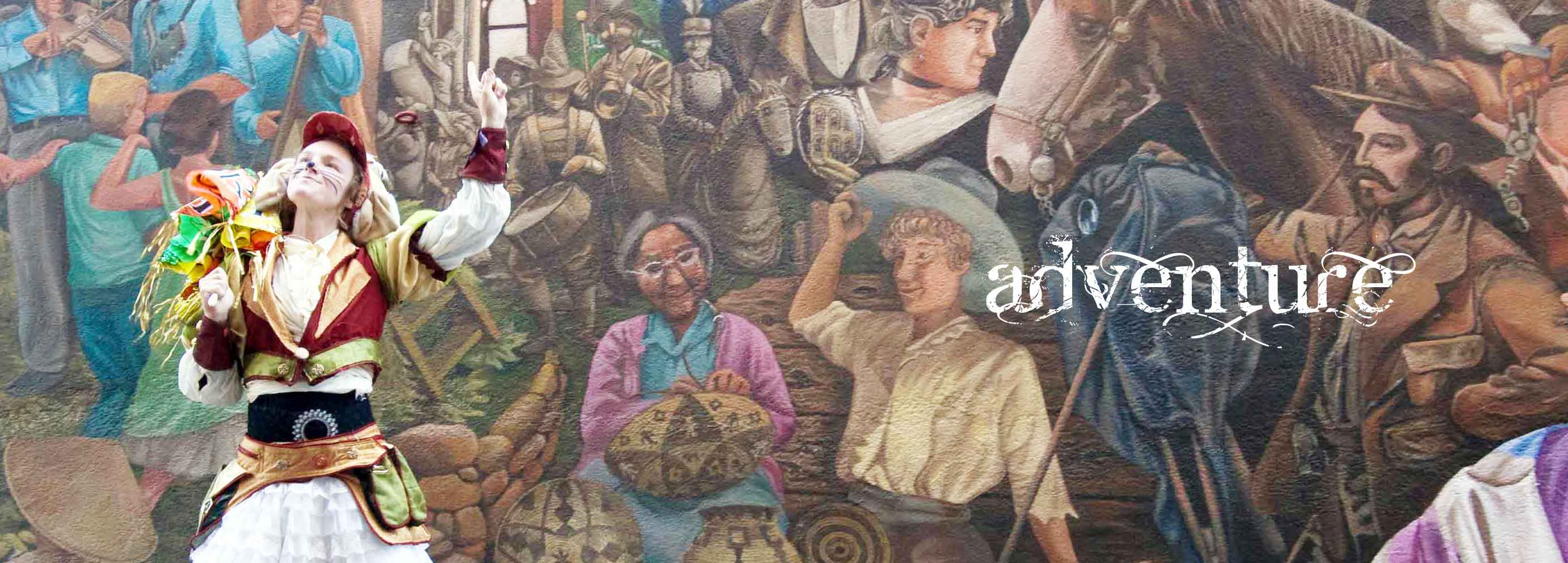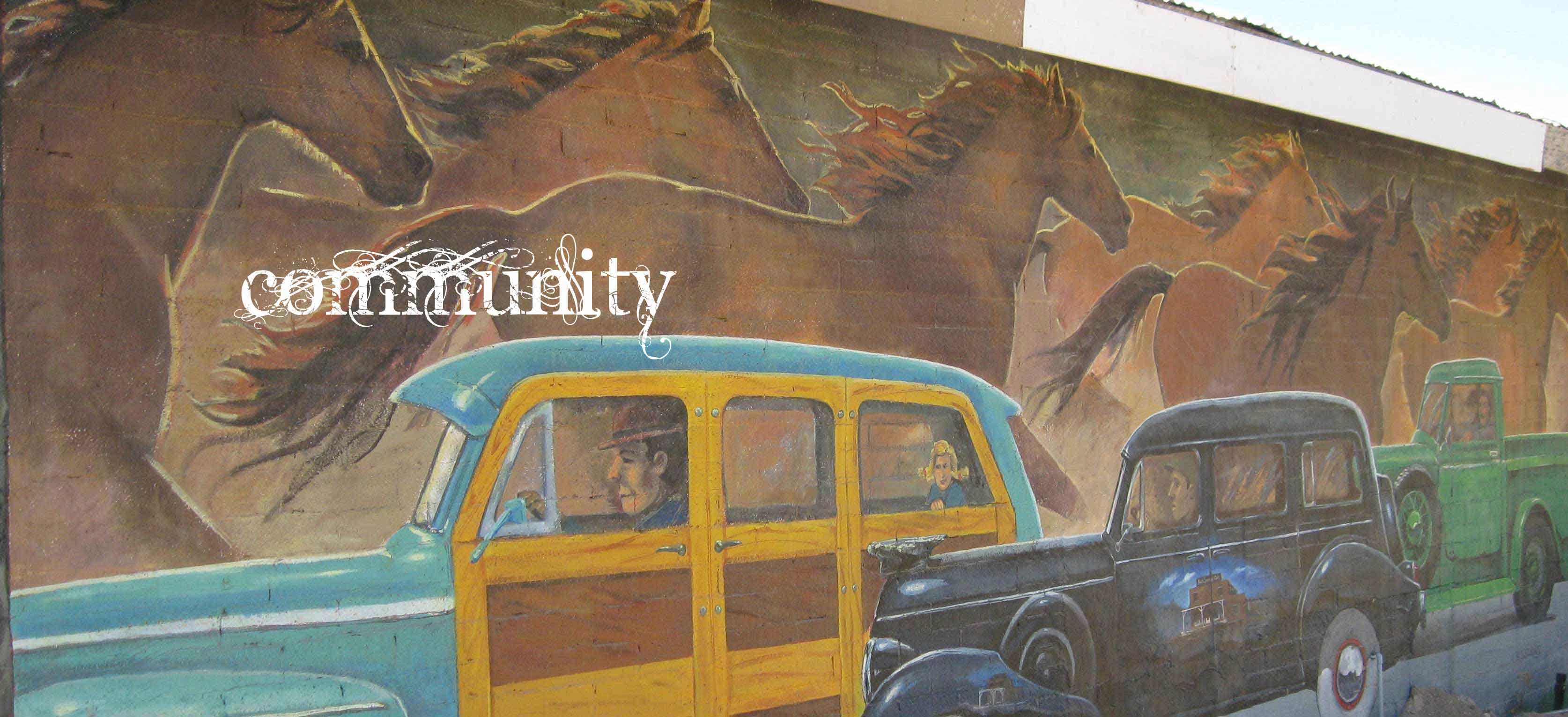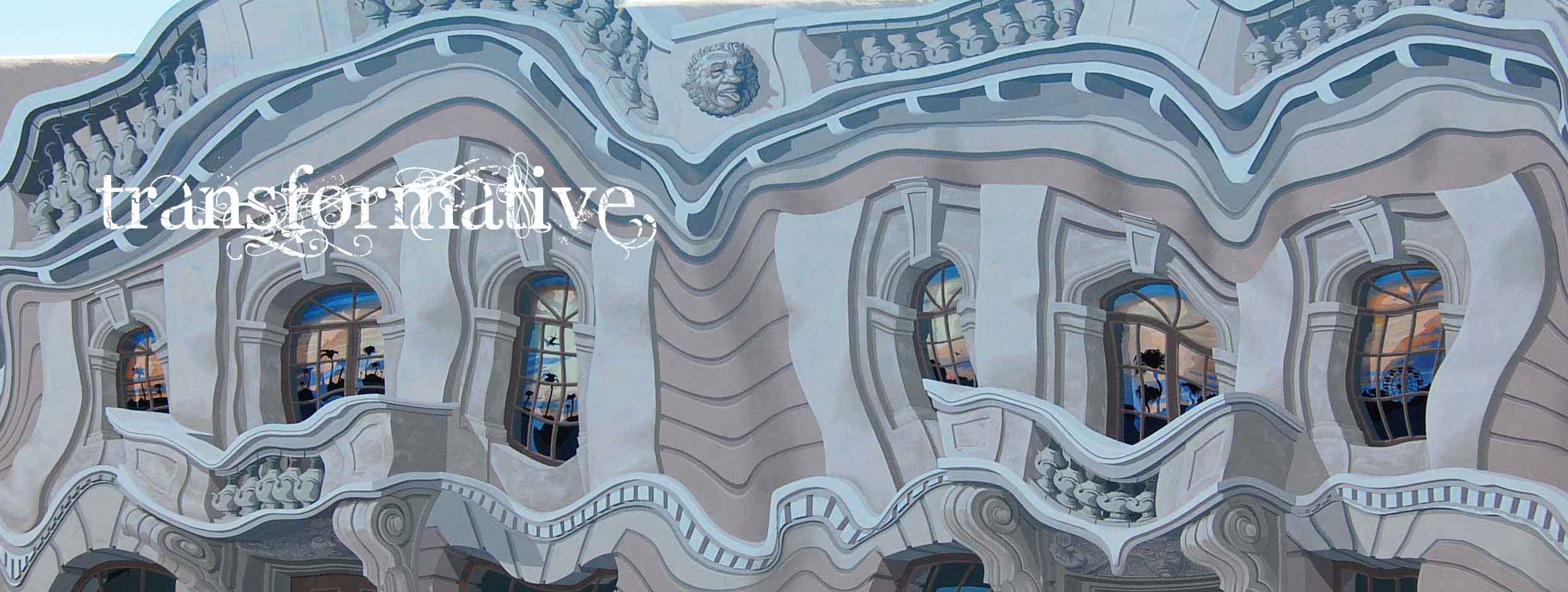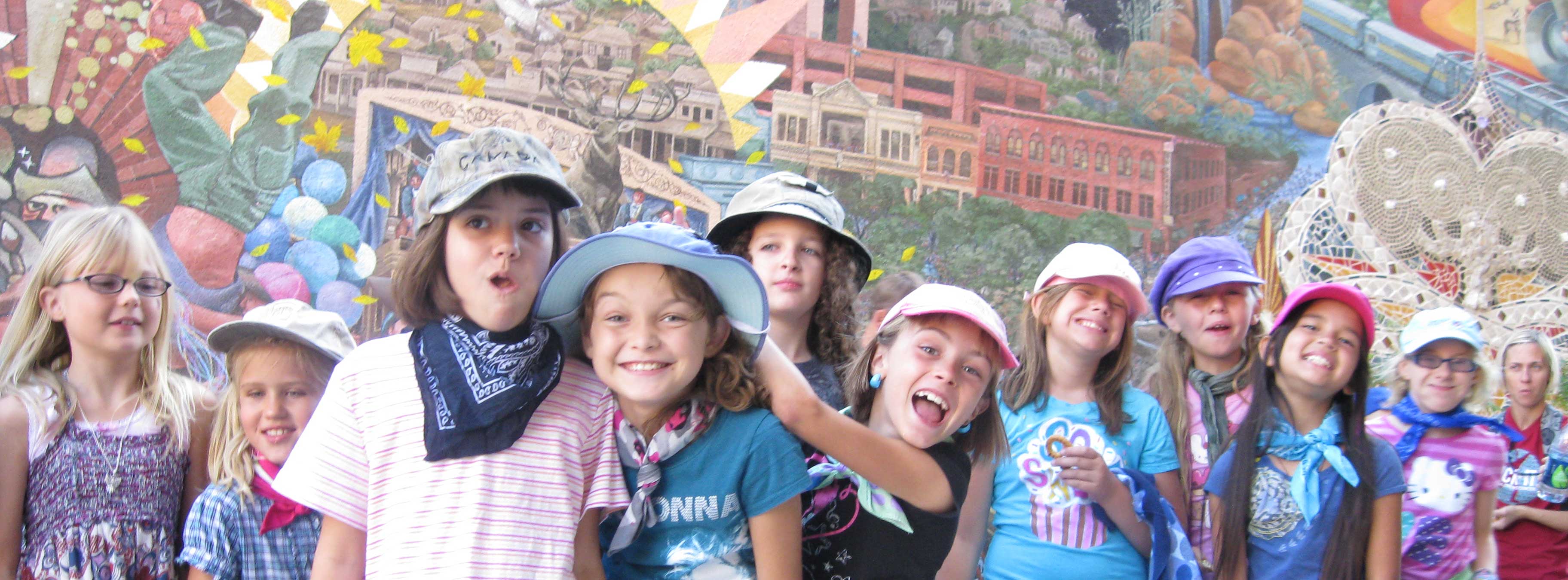"Mother Myth of Route 66"- Flagstaff Az. 2013

Artists- R.E. Wall and Margaret Dewar
 The Mother Road lived for about 60 years in its full glory. We were able to put together a chronological storyboard that offers a little piece of the spirit of each of the ages in ten year increments, from 1926 - 1985. Route 66 books and even modern travelers tell us that it was a virtual microcosm of American culture all comprised into one great road stretching from Chicago to L.A.
The Mother Road lived for about 60 years in its full glory. We were able to put together a chronological storyboard that offers a little piece of the spirit of each of the ages in ten year increments, from 1926 - 1985. Route 66 books and even modern travelers tell us that it was a virtual microcosm of American culture all comprised into one great road stretching from Chicago to L.A.
The Phoenix Avenue Route 66 mural is located 1 block from the Route 66 that exists today. The Phoenix Avenue corridor of the mural was the main drag of Route 66 from 1926 to 1934, but was decommissioned and re-routed a block away and north of the tracks. Many of the businesses that started up here, included the Downtowner, Sierra Vista, and the Du Beau Hostel, which was the first motor lodge in the country can still be found along Phoenix Avenue. They were disappointed to have lost the road and thus allowed to erect giant neon sign towers that promoted their businesses and could be seen from the new Route 66. Today, the City of Flagstaff is showing an interest in spotlighting the former role of Phoenix Avenue in Flagstaff history.
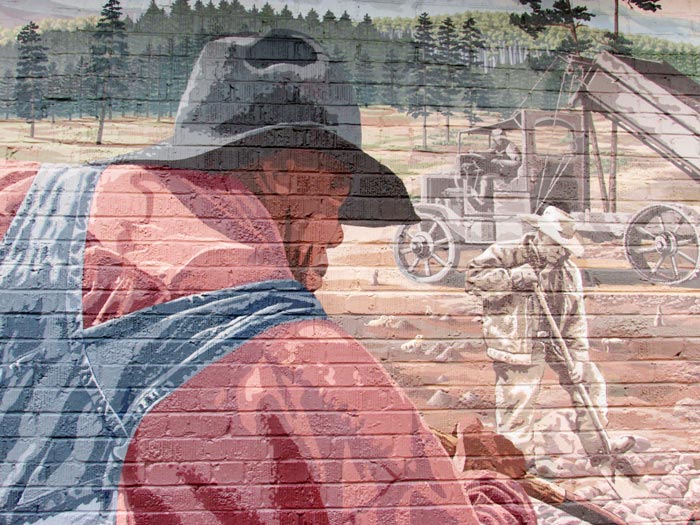
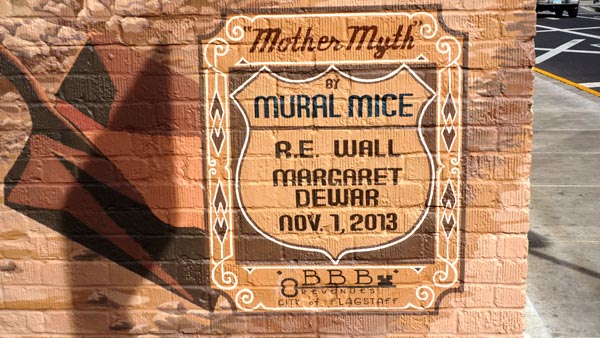
1926 - The Birth of a Legend
Our story begins on the right side of the mural and moves west to the left side. When the road was designated as an official federal highway and given the numerical designation 66 in 1926. It was an outgrowth of the Federal Aid Highway Act of 1921, and was essentially no more than a series of dirt roads connecting Chicago with Los Angeles for years. The workingmen of the South side were mostly African Americans, Hispanics, and immigrants who literally paved the way to the roads success. The road was originally entitled the National Trails Road and much of it was cut along the old Santa Fe Trail. Paving was complete in 1937.

1930's/1940's - Dustbowl to World War II
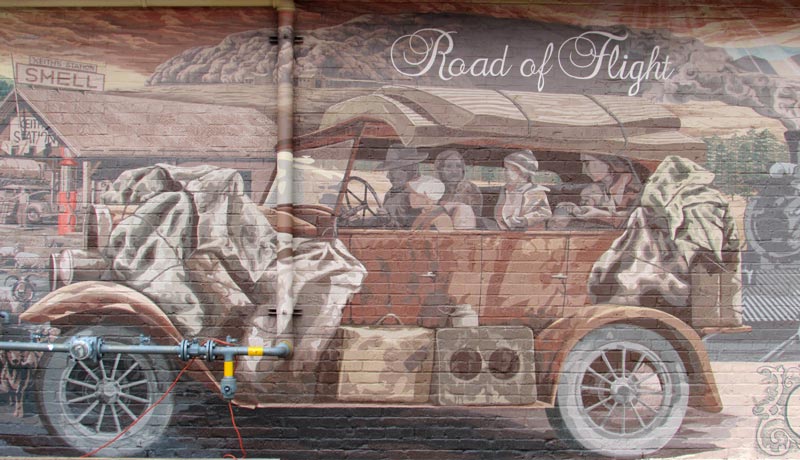
The road was called by many names. Soon after its birth there was a well-known Hollywood movie star and national idol, named Will Rogers, known for his lassoing and roping tricks that he could do in his movies while standing on a horse. In 1928, they applied his name to the road and it became the Will Rogers Highway. During the Great Depression and the Dust Bowl of the 1930’s, the road was referred to by John Steinbeck as the “ Mother Road” or “Road of Flight” in his novel the Grapes of Wrath. It was also called “America’s Highway.” There are so many names for Route 66, it’s quite interesting that people name it what they think it is. So in doing a mural about route 66, we were able to honor some of the names each of these decades gave it.
1950's - The Neon Strip
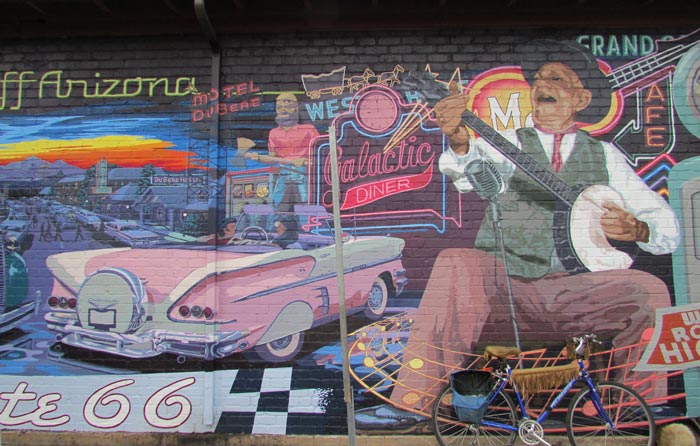
In the center of the mural we have a neon strip that is both Phoenix Avenue and the Route 66 strip at twilight when the neon is seen the best. Classic cars in the foreground help to define the era. The kitsch road signs of plastic Indians and odd attraction signs line the road on the way out of town.
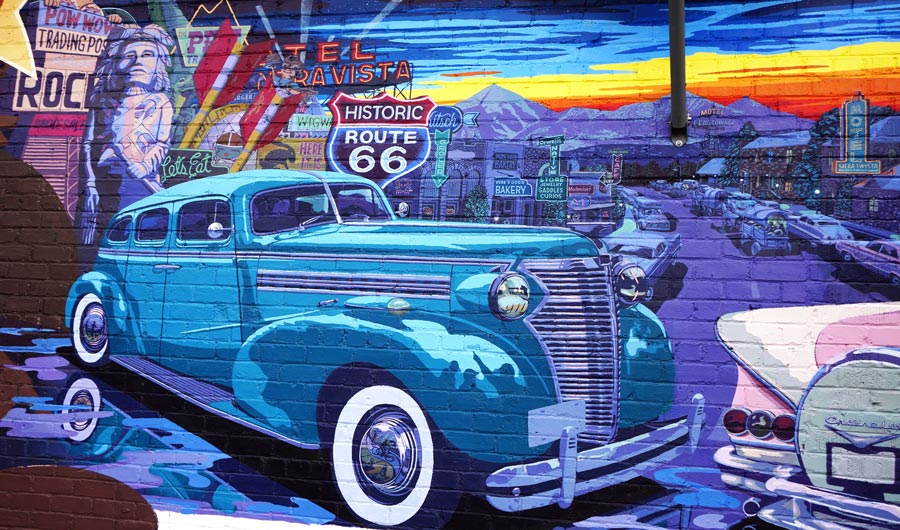

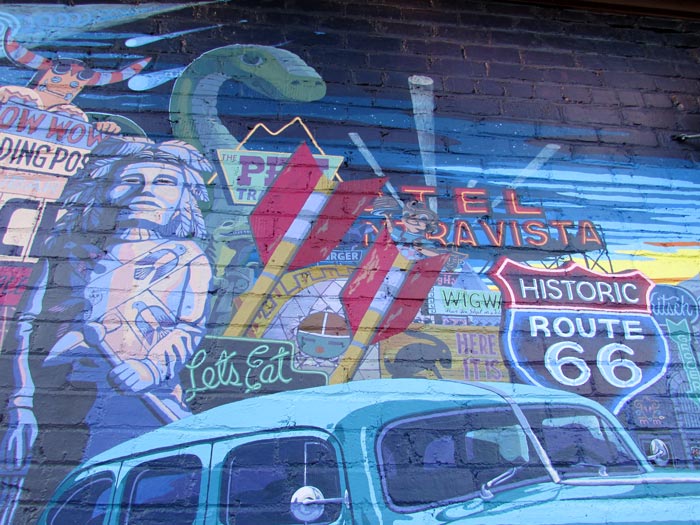
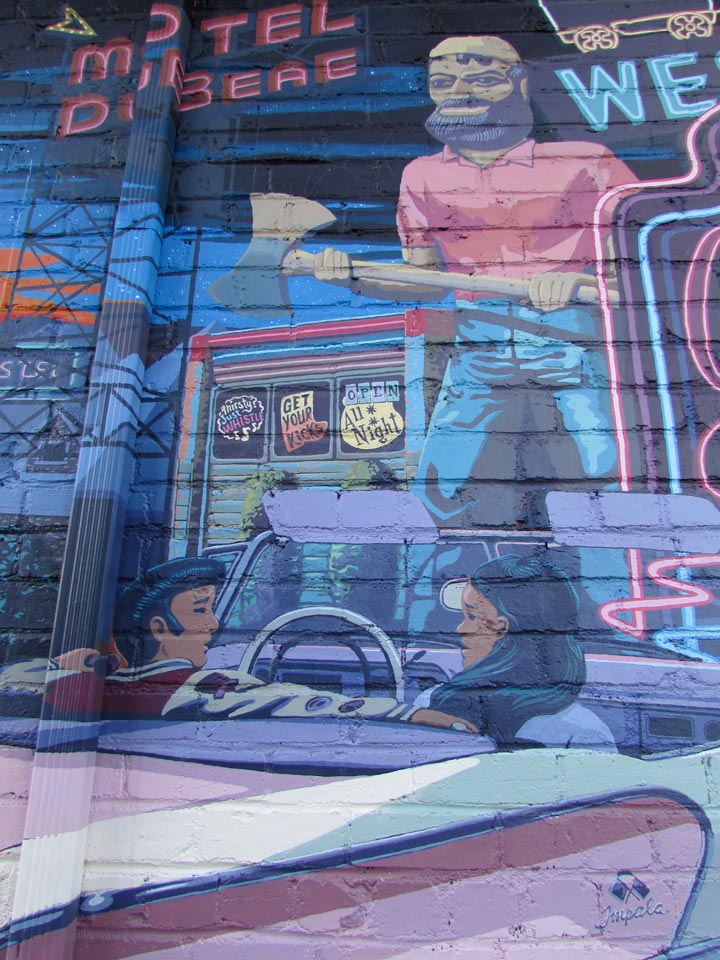
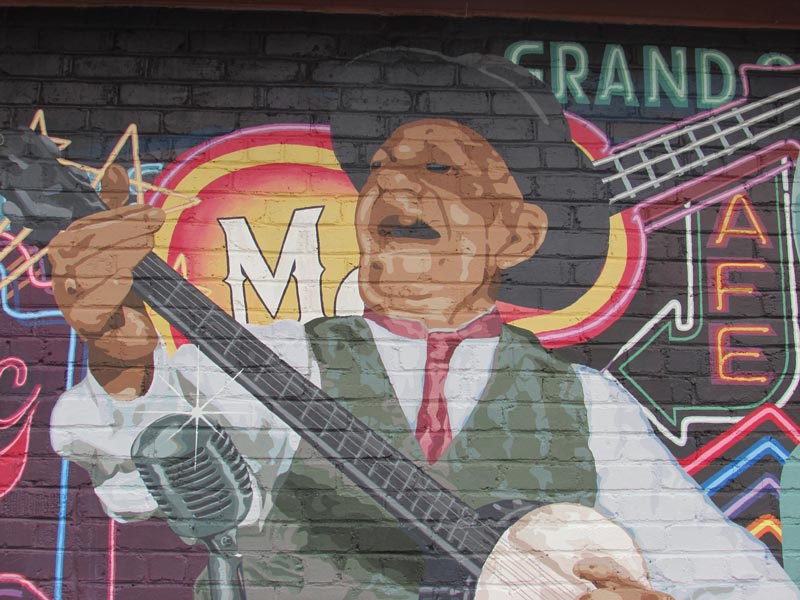
Native Culture
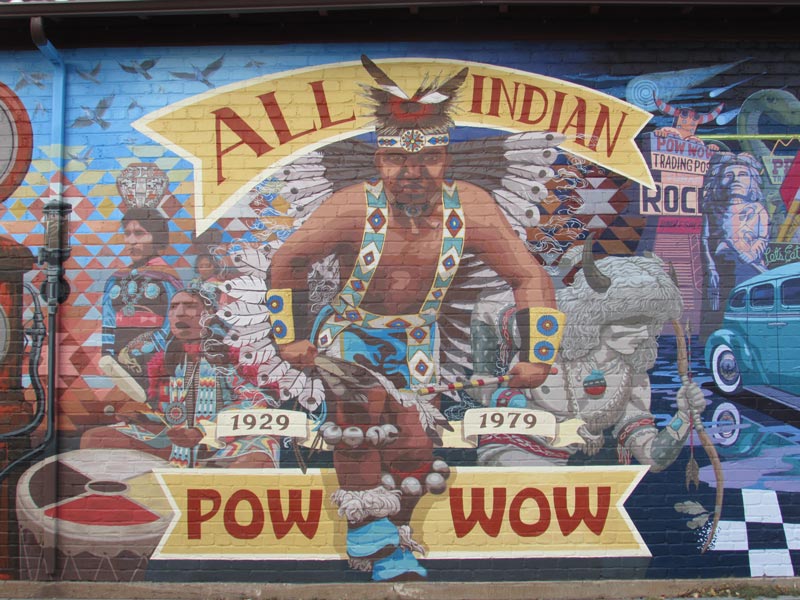
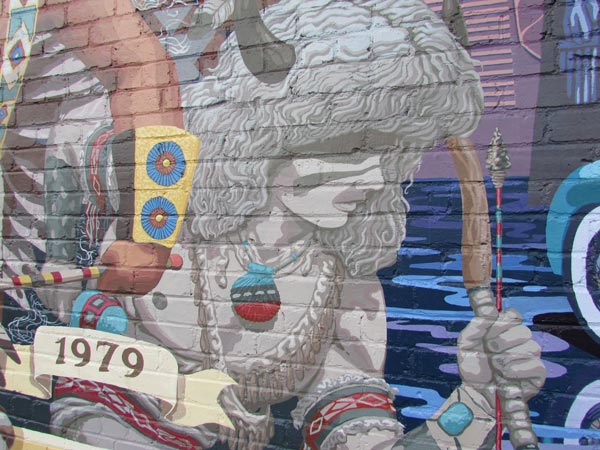
The All-Indian Pow Wow, lasted 50 years. It took place from 1929 to 1979. The all- Indian Pow Wow took place during the July 4th weekend. It drew Native Americans from all over the Southwest and Northwest. They would travel across vast distances on wagons with rubber wheels, being pulled by horses all the way down to Arizona for this big gathering of the tribes. It actually doubled the number of people in town. Upwards of 10,000 people would converge in Flagstaff quite suddenly. They would pitch tents up on Mars Hill and would base themselves there with campfires and cooking throughout the nights. During the days, they would participate in parades and dances along Route 66. It was quite the treat to come down and watch the natives dance in their regalia and the pageantry. People would seat themselves on top of the buildings and along the street to see the parades.

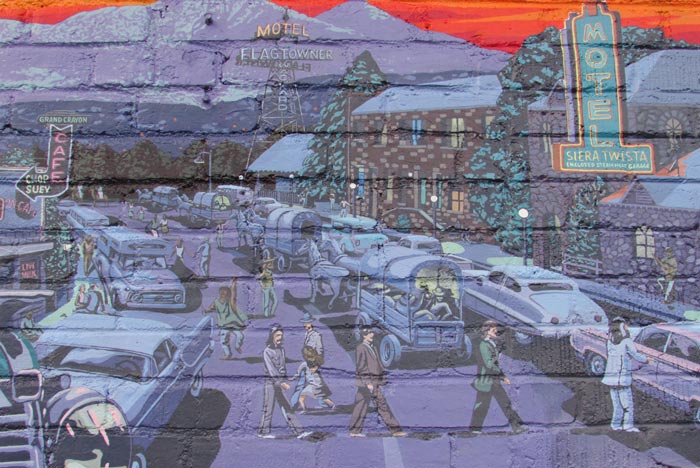
1960's/1970's - Looking For America


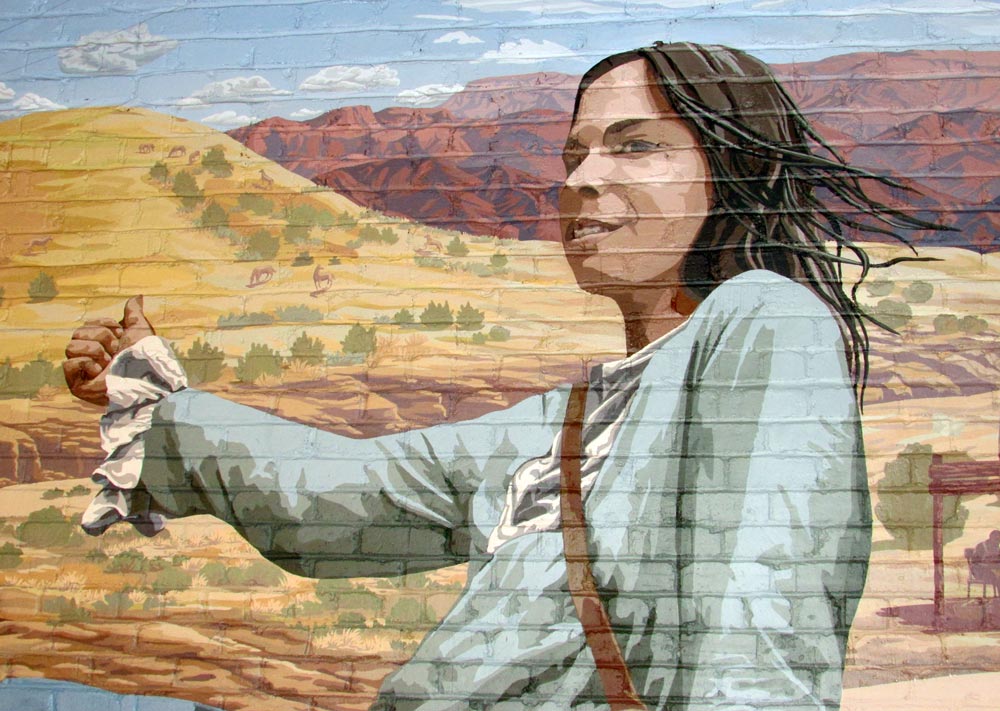
Flagstaff is a pivotal hub for travelers from around the world. During the 1960’s, hitchhikers dotted the highway from one end to the other. We placed a hitchhiker in the mural with our dog Ruby. She is looking for America and along comes the infamous Merry Pranksters bus Further. Driven by Neal Cassidy, the original bus made it from Oregon to Woodstock and back before retiring in 1970.
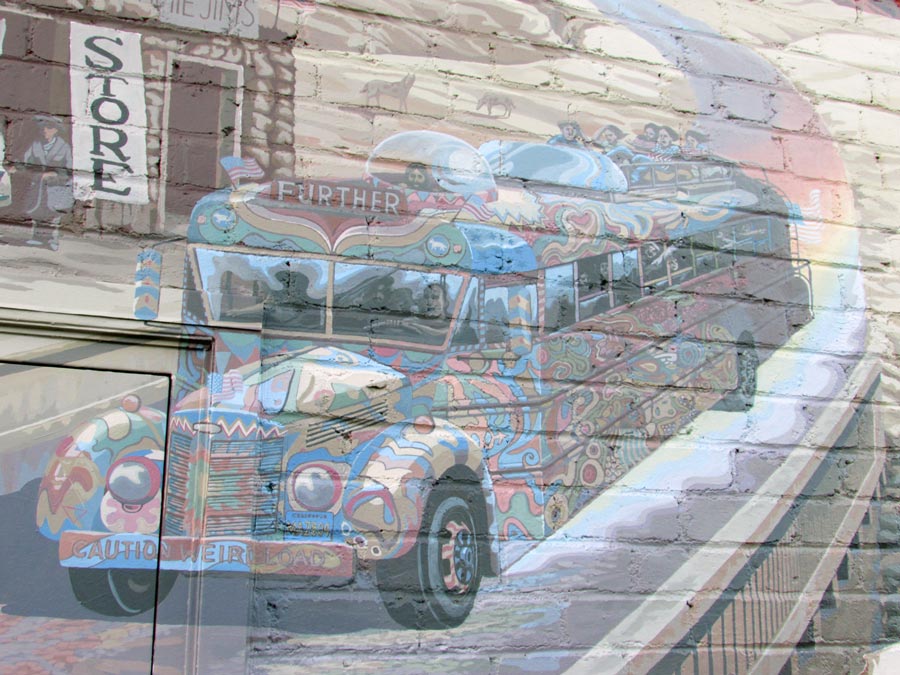
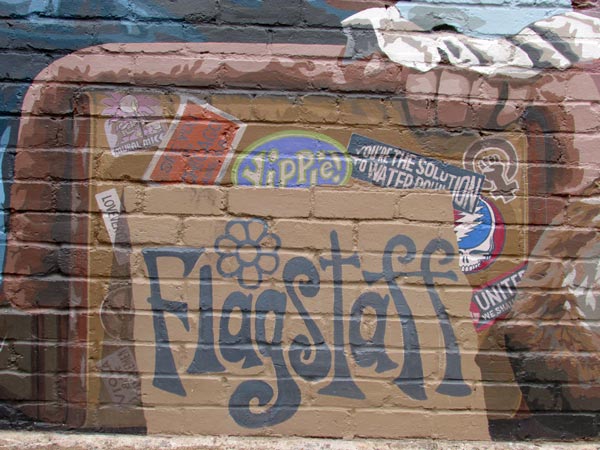
1985 to Present Day
Route 66 was officially decommissioned in 1985 and left to seed. I-40 provided a more direct route for travelers and can be seen passing over the famous road.
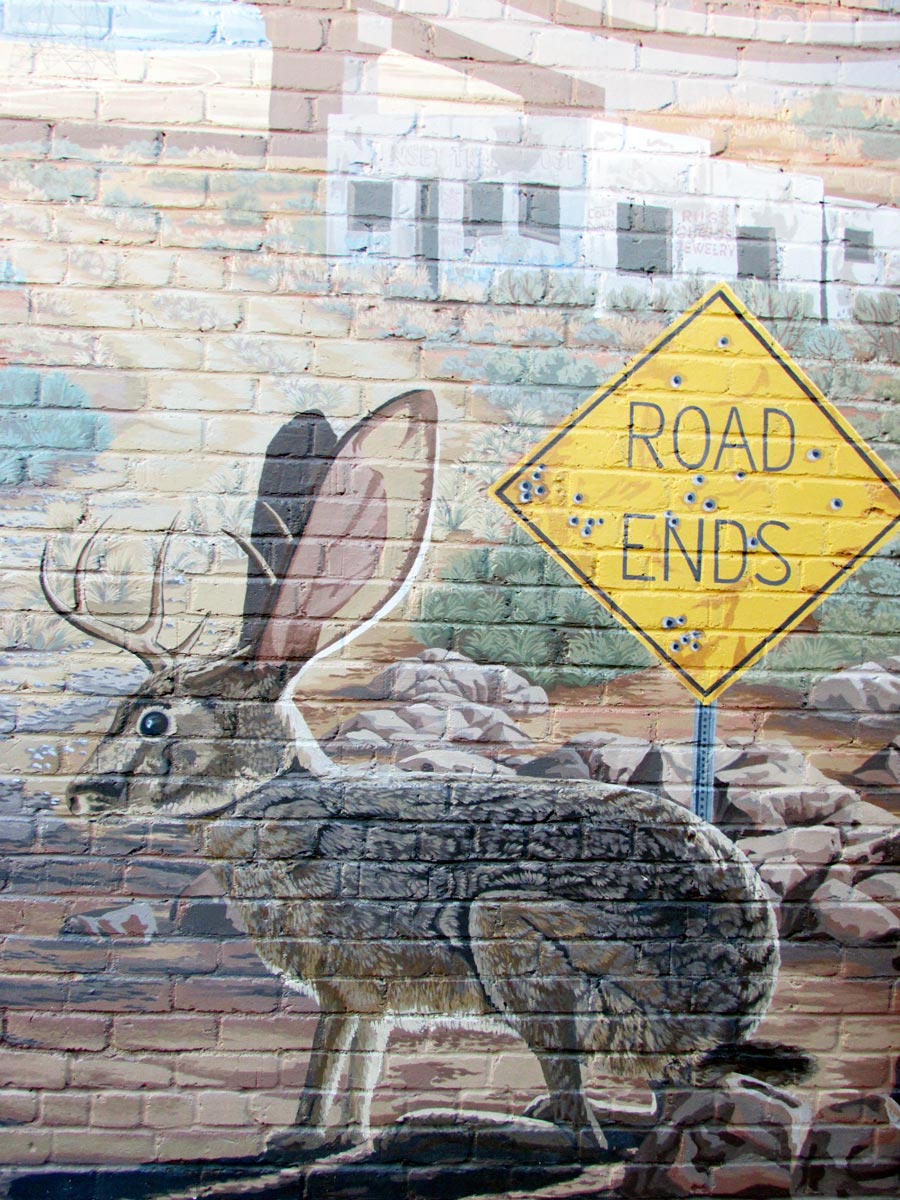
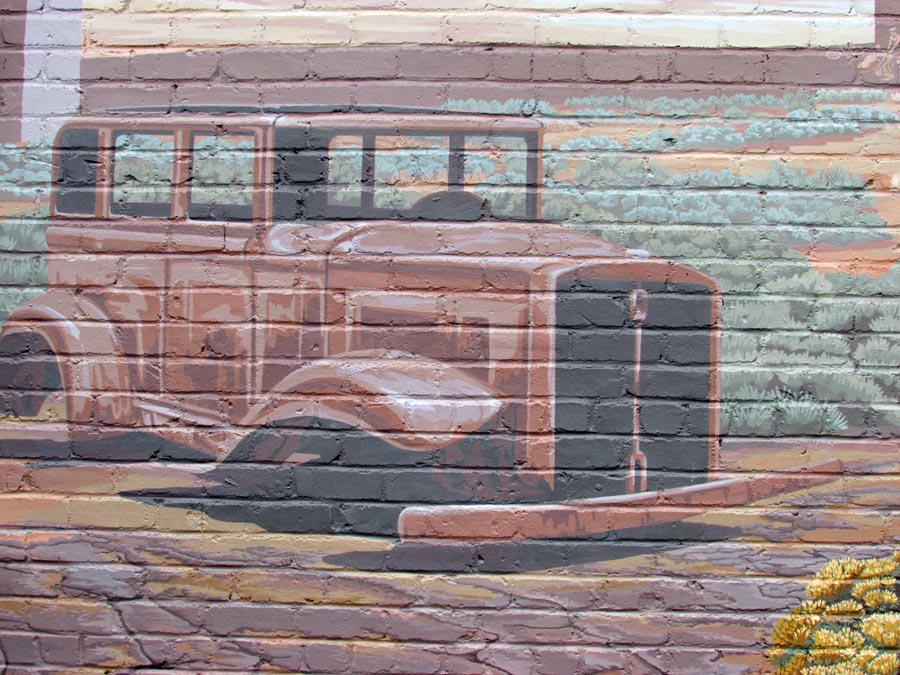

This mural is an expression of what we as Americans have held Route 66 to symbolize. The history of Route 66 has been romanticized, the narrative is almost a Hollywood myth.
History is meant to explain the past, but it also reflects the values of today. The historic narrative of Route 66 glorifies the ideas of the wild west, the working man’s struggle, car culture and the freedom of the open road. The meaning we have given the road reflects the American values of individualism, self-realization, and patriotism. Route 66 has gained almost celebrity status, but mostly since it was decommissioned. With that in mind, there is tremendous nostalgia associated with the narratives of Route 66 that tell of a simpler time in America, the “good old days” as it were. Nostalgia can almost be like amnesia, people forget what life was really like. The stories of Route 66 often exclude the less desirable memories of prejudice against Native Americans and other races, and the hardships people faced when the road was closed.
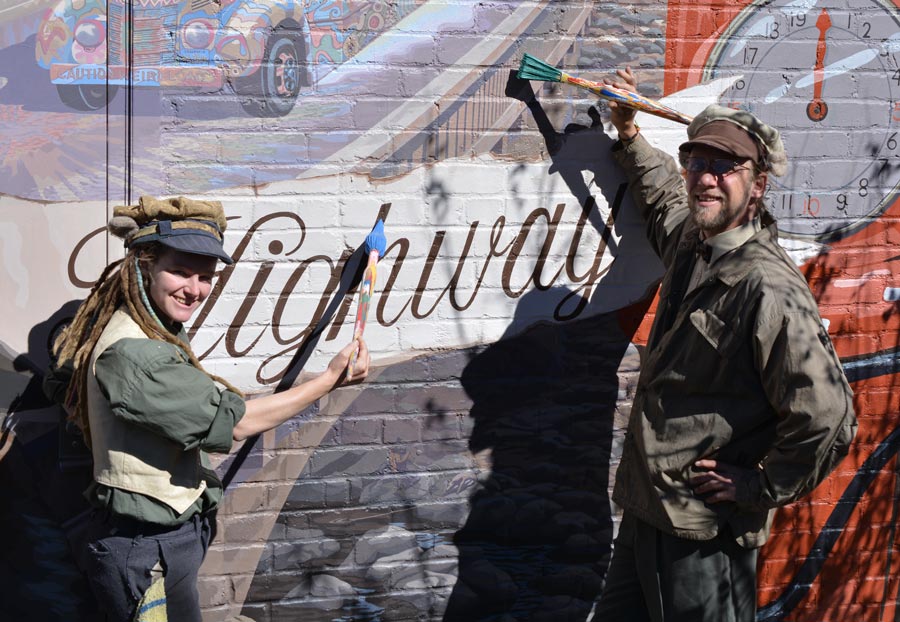
Click Here For Images of the Work In Progress

